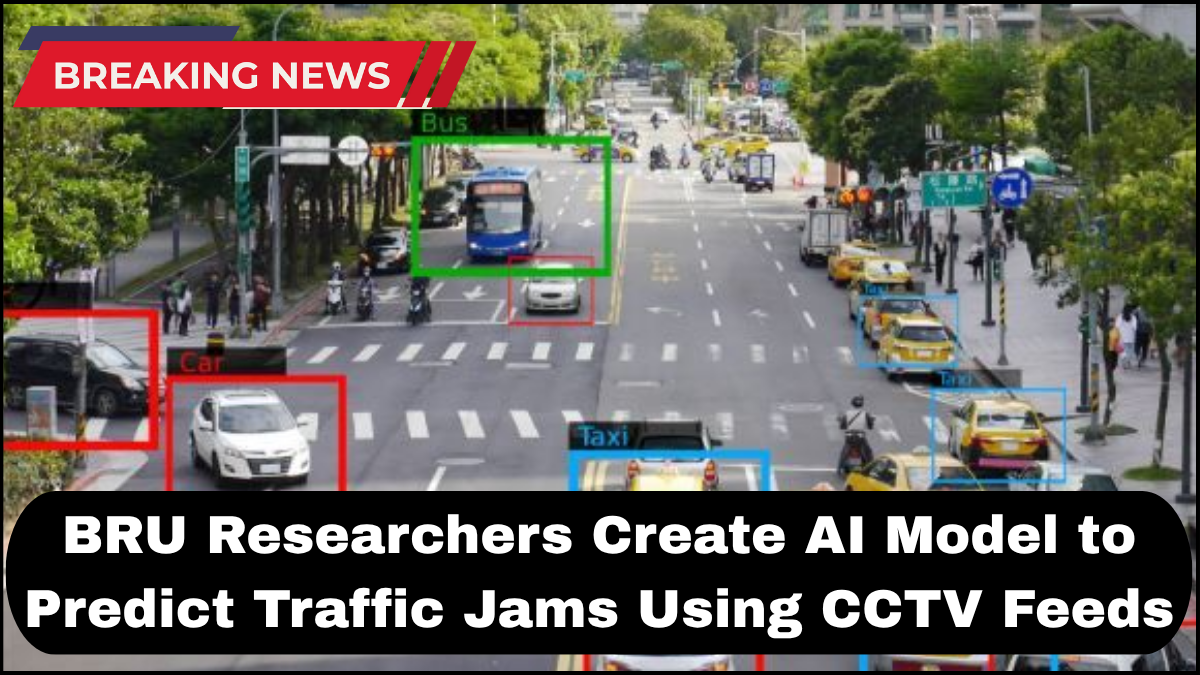In a groundbreaking stride toward smarter transportation systems, researchers at Bharathiar Research University (BRU) have unveiled an advanced AI model designed to predict traffic congestion using live CCTV feeds. The innovation marks a significant leap in the application of AI in traffic monitoring, offering a scalable solution to one of urbanization’s most persistent problems—traffic jams.
Unlike conventional traffic prediction tools, which rely heavily on historical data and fixed sensors, BRU’s model uses computer vision and machine learning to assess real-time road conditions. This dynamic system analyzes visual data from surveillance cameras positioned across high-traffic zones, enabling proactive traffic management and smarter routing decisions.

How the AI Model Works
At the core of the system is a deep learning framework trained on thousands of hours of CCTV footage from various urban environments. The model identifies patterns and anomalies in vehicle movement, such as sudden slowdowns, increasing density, or erratic driving behavior.
It operates through three critical phases:
-
Video Data Ingestion: Live feeds from CCTV cameras are continuously streamed to a central processing unit.
-
Object Detection & Classification: The AI detects and classifies different vehicle types, lane usage, and pedestrian crossings.
-
Predictive Analytics: Using temporal modeling, the system forecasts congestion levels in specific areas within the next 5–15 minutes.
By integrating AI in traffic monitoring, this system transitions from reactive traffic control to a more predictive, preemptive strategy.
Potential Impact on Urban Mobility
This innovation could radically transform how cities manage traffic. Municipalities often struggle with limited infrastructure and growing vehicle numbers. Predictive AI offers a powerful tool to alleviate these pressures.
City traffic management departments can use this technology to:
-
Adjust traffic signal timings dynamically
-
Dispatch traffic officers to critical intersections
-
Inform navigation apps in real time
-
Issue automated alerts to drivers
The ripple effects go further. Reduced congestion means lower emissions, less fuel consumption, and shorter travel times, aligning with environmental and public health goals.
Academic Research Meets Real-World Application
This project is a compelling example of how academic research can drive innovation with practical, city-wide benefits. The BRU research team collaborated closely with municipal transport authorities to ensure the model could be deployed on existing infrastructure.
Their findings are currently under peer review for publication in major journals related to AI and urban studies, reinforcing the bridge between theory and practice. Moreover, the university has initiated talks with private sector partners in the auto sector for potential integration with in-vehicle navigation systems.
Implications for the Auto Sector and Smart Cities
As automotive manufacturers move towards intelligent transport systems, BRU’s predictive model could provide vital backend data for connected vehicles and autonomous navigation. Cars equipped with advanced driver-assistance systems (ADAS) could receive early warnings about upcoming congestion and reroute accordingly.
This collaboration between research institutions and the auto sector signals the next phase of smart city infrastructure, where traffic flow is not just observed but optimized through machine learning.
Challenges and Future Directions
While the AI model has shown promising results in trials, there are challenges ahead:
-
Privacy Concerns: Handling CCTV data raises questions around surveillance ethics.
-
Scalability: Different cities have different CCTV infrastructures and traffic patterns.
-
Data Quality: Poor lighting or weather conditions can affect video clarity and model accuracy.
The BRU team is addressing these issues by incorporating privacy-preserving algorithms and training the model with diverse datasets for broader adaptability.
Frequently Asked Questions (FAQs)
Q1: How does AI improve traffic monitoring compared to traditional methods?
AI enables real-time analysis and prediction, whereas traditional systems often rely on fixed-time schedules and historical data. This allows cities to respond to traffic changes before they escalate into jams.
Q2: Is this AI model already in use?
As of now, the model is in the pilot testing phase with select city traffic departments. Broader deployment is expected after further refinement and successful field tests.
Q3: What role does the auto sector play in this development?
Automotive companies are exploring ways to integrate this AI data into navigation systems and ADAS features, enhancing vehicle responsiveness to traffic conditions.
Q4: Are there privacy risks with using CCTV footage for AI training?
Yes, but the research team is implementing anonymization techniques and ensuring data is handled according to privacy regulations.
Q5: Can this system work in rural or less urbanized areas?
Its effectiveness depends on CCTV coverage and traffic volume. Adaptations may be required for low-density regions, but the underlying AI principles remain valid.
click here to learn more